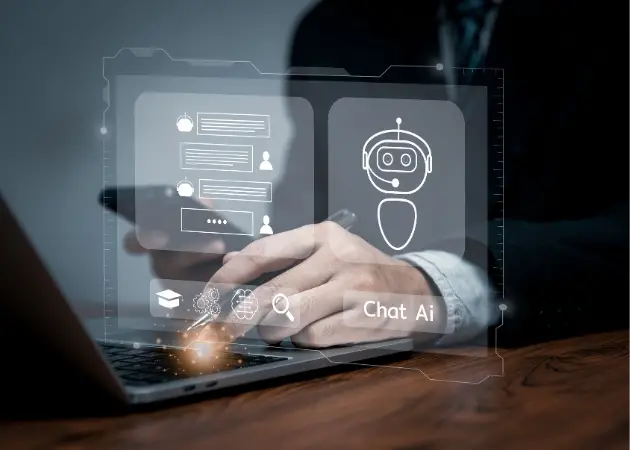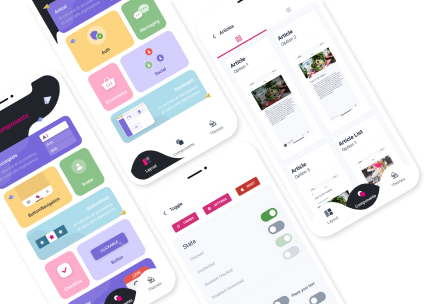IT Outsourcing Trends 2024 What to Expect in the Future
Outsourcing has become a common practice for businesses looking to cut costs and improve efficiency. In the world of technology, IT outsourcing has been on the rise as companies seek to leverage specialized skills and resources from external providers. As we look towards the future, it is important to understand the trends that will shape the IT outsourcing landscape in 2024.

It is important to understand the trends that will shape the IT outsourcing landscape in 2024
The Rise of Cloud Computing and Managed Services
The Shift Towards Cloud-Based Solutions
Cloud computing has been gaining traction in recent years, and this trend is expected to continue in the coming years. With the increasing demand for remote work and the need for flexible and scalable solutions, more and more businesses are turning to cloud-based services for their IT needs. This includes everything from data storage and management to software development and maintenance.
The use of cloud-based solutions not only allows businesses to access advanced technologies at a lower cost, but it also enables them to focus on their core competencies while leaving the technical aspects to specialized providers. This shift towards cloud-based solutions will have a significant impact on the IT outsourcing industry, as more companies will look to outsource their IT needs to cloud service providers.
The Emergence of Managed Services
Managed services, which involve the outsourcing of day-to-day IT operations and support, are also expected to see a surge in demand in the coming years. As businesses strive to stay competitive and keep up with the ever-changing technological landscape, they will require expert assistance to manage their IT infrastructure. This is where managed service providers come in, offering a range of services such as network monitoring, security, and disaster recovery.
The use of managed services not only helps businesses reduce costs but also provides them with access to specialized expertise and resources that may not be available in-house. This trend is expected to continue in 2024, as more businesses realize the benefits of outsourcing their IT operations to managed service providers.
The Impact of Artificial Intelligence and Automation
The Role of AI in IT Outsourcing
Artificial intelligence (AI) has been making waves in the technology industry, and its impact on IT outsourcing is undeniable. With the ability to automate repetitive tasks and make data-driven decisions, AI has the potential to transform the way IT services are delivered. This includes everything from software development and testing to customer support and data analysis.
As AI continues to evolve and become more sophisticated, it is expected to play a significant role in IT outsourcing in the future. Businesses will be able to leverage AI-powered tools and platforms to improve efficiency, reduce costs, and enhance the overall quality of their IT services.

The Rise of Robotic Process Automation
Robotic process automation (RPA) is another trend that is expected to shape the IT outsourcing landscape in 2024. RPA involves the use of software robots to automate repetitive and rule-based tasks, freeing up human resources to focus on more complex and strategic work. This technology has the potential to revolutionize the way businesses outsource their IT processes, as it offers a cost-effective and efficient solution for routine tasks.
With the increasing adoption of RPA, we can expect to see a shift towards more value-added IT outsourcing services, where humans and robots work together to deliver optimal results.
The Internet of Things
The Internet of Things (IoT) has been rapidly growing in recent years, and it is expected to continue its growth in the coming years. With the increasing demand for connected devices and smart technologies, businesses are looking towards outsourcing their IT services to keep up with the pace of this technological revolution. In this article, we will discuss the trends in IoT IT outsourcing that are expected to shape the industry by 2024.
Increased Adoption of IoT Devices
The number of connected devices is expected to reach 50 billion by 2024, according to a report by Cisco. This means that there will be a huge demand for IoT services, and businesses will need to outsource their IT services to meet this demand. Outsourcing will allow companies to access specialized skills and expertise in developing and managing IoT devices, without having to invest in building an in-house team.
Focus on Security
With the increase in the number of connected devices, security concerns have also risen. As more devices are connected to the internet, the risk of cyber-attacks and data breaches also increases. Businesses will need to ensure that their IoT devices are secure and protected from potential threats. Outsourcing IT services to specialized providers can help companies to implement robust security measures and stay ahead of cybercriminals.
Integration with Cloud Computing
The integration of IoT with cloud computing is expected to be a major trend in the coming years. Cloud computing provides a scalable and cost-effective solution for storing and processing the vast amount of data generated by IoT devices. By outsourcing their IT services, businesses can leverage the expertise of cloud service providers to manage their IoT infrastructure and data effectively.
Rise of Edge Computing
Edge computing is gaining popularity as it allows data to be processed closer to the source, reducing latency and improving response time. This is particularly important for applications that require real-time data processing, such as self-driving cars or industrial automation. Outsourcing IT services to providers with expertise in edge computing will enable businesses to take advantage of this technology without having to invest in building their own infrastructure.
Shift towards Predictive Maintenance
With the help of IoT devices, businesses can collect real-time data on the performance of their equipment and machinery. This data can be used to predict when maintenance is required, reducing downtime and improving efficiency. Outsourcing IT services to providers with expertise in predictive analytics will help businesses to make better use of this data and optimize their operations.
Increased Demand for Data Analytics
The massive amount of data generated by IoT devices presents a significant opportunity for businesses to gain insights and make data-driven decisions. However, analyzing this data requires specialized skills and tools. By outsourcing their IT services, businesses can access advanced data analytics capabilities without having to invest in expensive software and training.
Emphasis on User Experience
As the number of connected devices increases, user experience will become a crucial factor in the success of IoT products and services. Outsourcing IT services to providers with expertise in user experience design will help businesses to create intuitive and user-friendly interfaces for their IoT devices, enhancing customer satisfaction and loyalty.
How to Use IT Outsourcing Trends 2024
To stay ahead of the curve and take advantage of the latest IT outsourcing trends, businesses should consider the following strategies:
- Stay informed: Keep up with industry news and developments to understand how IT outsourcing is evolving.
- Evaluate your needs: Assess your current IT infrastructure and identify areas that could benefit from outsourcing.
- Choose the right provider: When outsourcing, it is crucial to select a reputable and experienced provider that aligns with your business goals.
- Embrace new technologies: Be open to adopting new technologies such as cloud computing and AI to improve your outsourcing experience.
- Communicate effectively: Clear communication is key when working with an outsourced IT team. Make sure expectations and goals are clearly defined from the start.
Examples of IT Outsourcing Trends 2024 in Action
To better understand how these trends will impact the IT outsourcing industry, let's look at a few examples:
- A small business that relies on manual data entry for its operations decides to outsource this task to a managed service provider that uses RPA technology. This not only reduces costs but also improves accuracy and efficiency.
- A medium-sized company looking to develop a new mobile application partners with a cloud service provider that offers a range of development tools and resources. This allows them to access advanced technologies without having to invest in expensive infrastructure.
- A large corporation that handles sensitive customer data decides to outsource its cybersecurity needs to a specialized provider that uses AI-powered tools for threat detection and prevention. This ensures the security of their data while freeing up internal resources for other tasks.
Comparing Traditional IT Outsourcing vs. IT Outsourcing Trends 2024
Traditional IT outsourcing involves the outsourcing of specific tasks or projects to external providers. However, with the emergence of new technologies and trends, we can expect to see a shift towards more comprehensive and strategic outsourcing partnerships. This means that businesses will not only outsource specific tasks but also entire processes and operations.
Additionally, traditional IT outsourcing often involves offshoring, where work is sent to countries with lower labor costs. With the rise of automation and AI, we may see a shift towards nearshoring, where businesses outsource to nearby countries with similar time zones and cultural backgrounds. This allows for better communication and collaboration between the client and the outsourcing team.
Advice for Businesses Considering IT Outsourcing in 2024
As businesses consider outsourcing their IT needs in the future, here are some tips to keep in mind:
- Understand your business needs and goals before outsourcing.
- Research potential providers thoroughly to ensure they have the expertise and resources to meet your requirements.
- Clearly define expectations and establish effective communication channels with the outsourcing team.
- Continuously monitor and evaluate the outsourcing partnership to ensure it is meeting your business objectives.
- Be open to new technologies and trends that could improve your outsourcing experience.

Understand your business needs and goals before outsourcing
FAQs about IT Outsourcing Trends 2024
What are the benefits of outsourcing IT services?
Outsourcing IT services can provide businesses with access to specialized skills and resources, reduce costs, improve efficiency, and allow them to focus on their core competencies.
Will AI replace human workers in IT outsourcing?
While AI has the potential to automate certain tasks, it is unlikely to completely replace human workers. Instead, we may see a shift towards more collaborative work between humans and AI-powered tools.
How do I choose the right IT outsourcing provider?
When choosing an IT outsourcing provider, consider factors such as their experience, expertise, reputation, and alignment with your business goals.
Is nearshoring a better option than offshoring for IT outsourcing?
It depends on your business needs and preferences. Nearshoring allows for better communication and collaboration, while offshoring may offer lower labor costs.
How can I ensure the security of my data when outsourcing IT services?
Choose a reputable provider with strong security measures in place and establish clear protocols for handling sensitive data.
Conclusion: The Future of IT Outsourcing Looks Bright
As we look towards 2024, it is clear that IT outsourcing will continue to play a significant role in the technology industry. With the rise of cloud computing, managed services, AI, and automation, businesses will have access to a wide range of specialized services and resources to help them stay competitive and drive growth. By understanding and embracing these trends, businesses can leverage the power of IT outsourcing to achieve their goals and stay ahead of the curve.
If you want to have more updates on upcoming IT outsourcing trends, please feel free to contact our experienced developers at Groove Technology. We are happy to help you turn your vision into reality!









